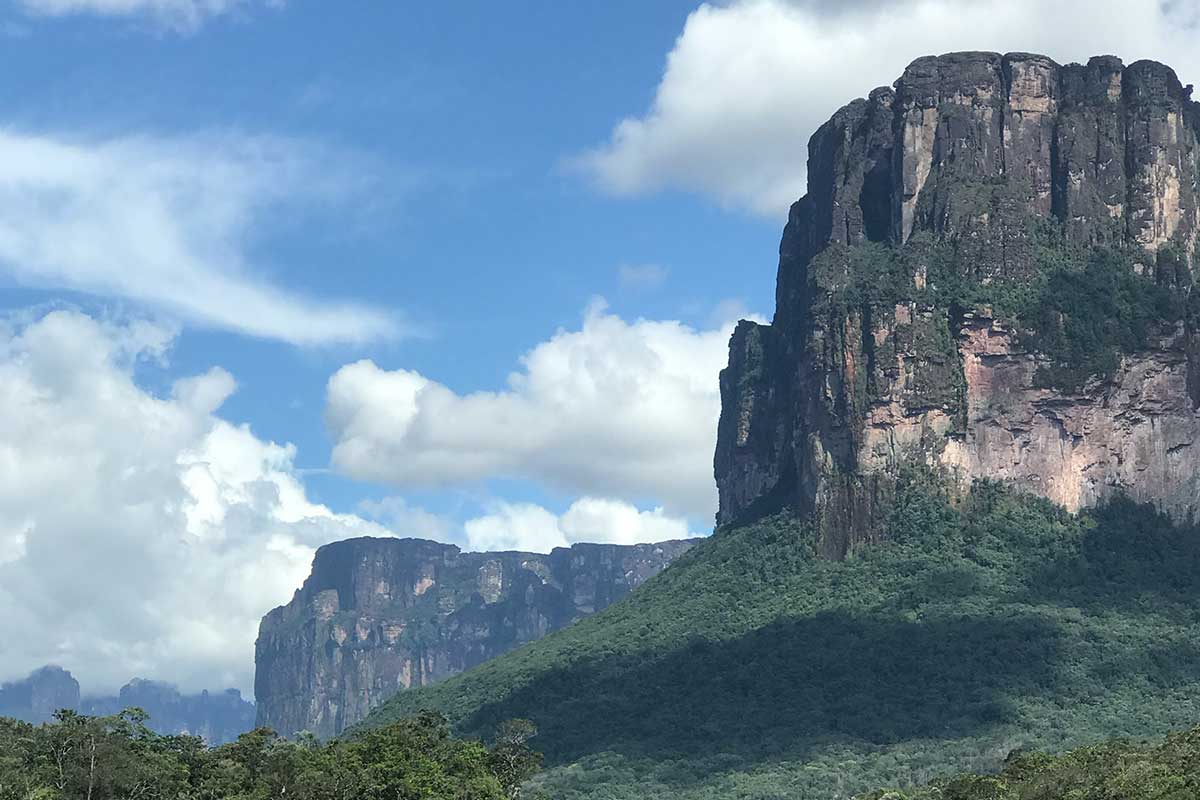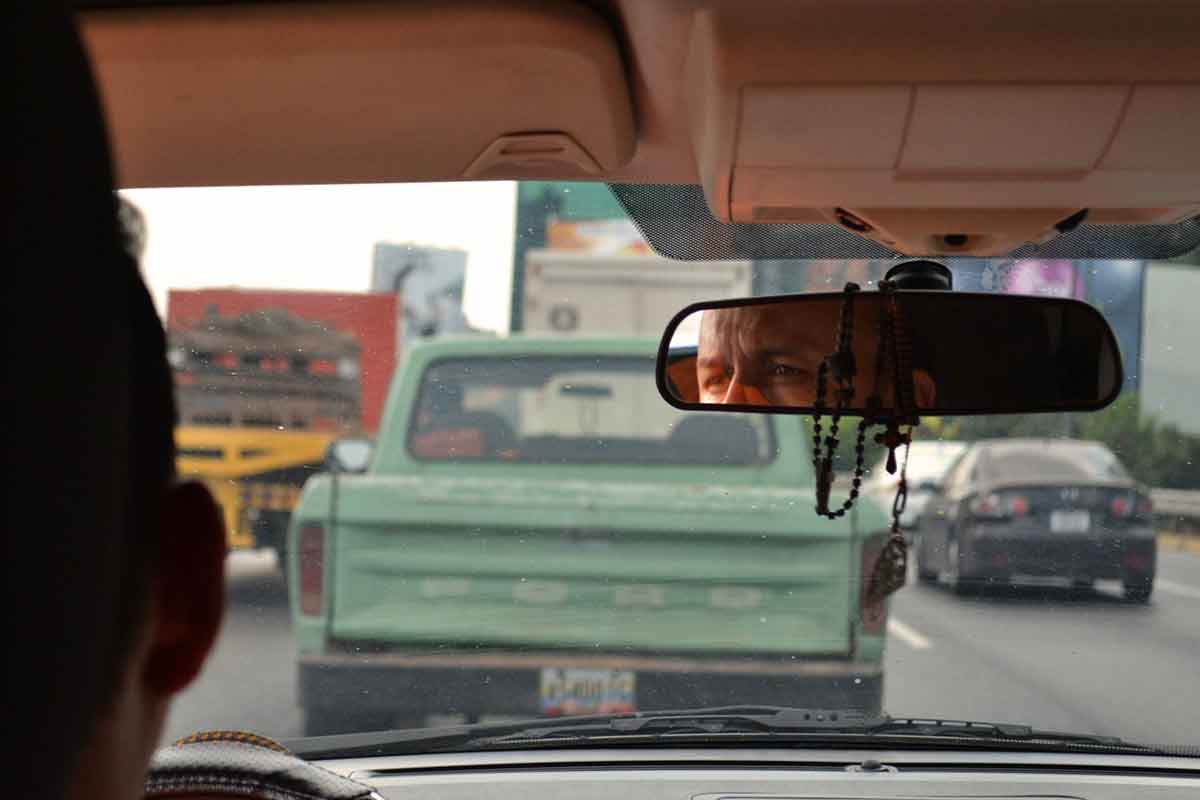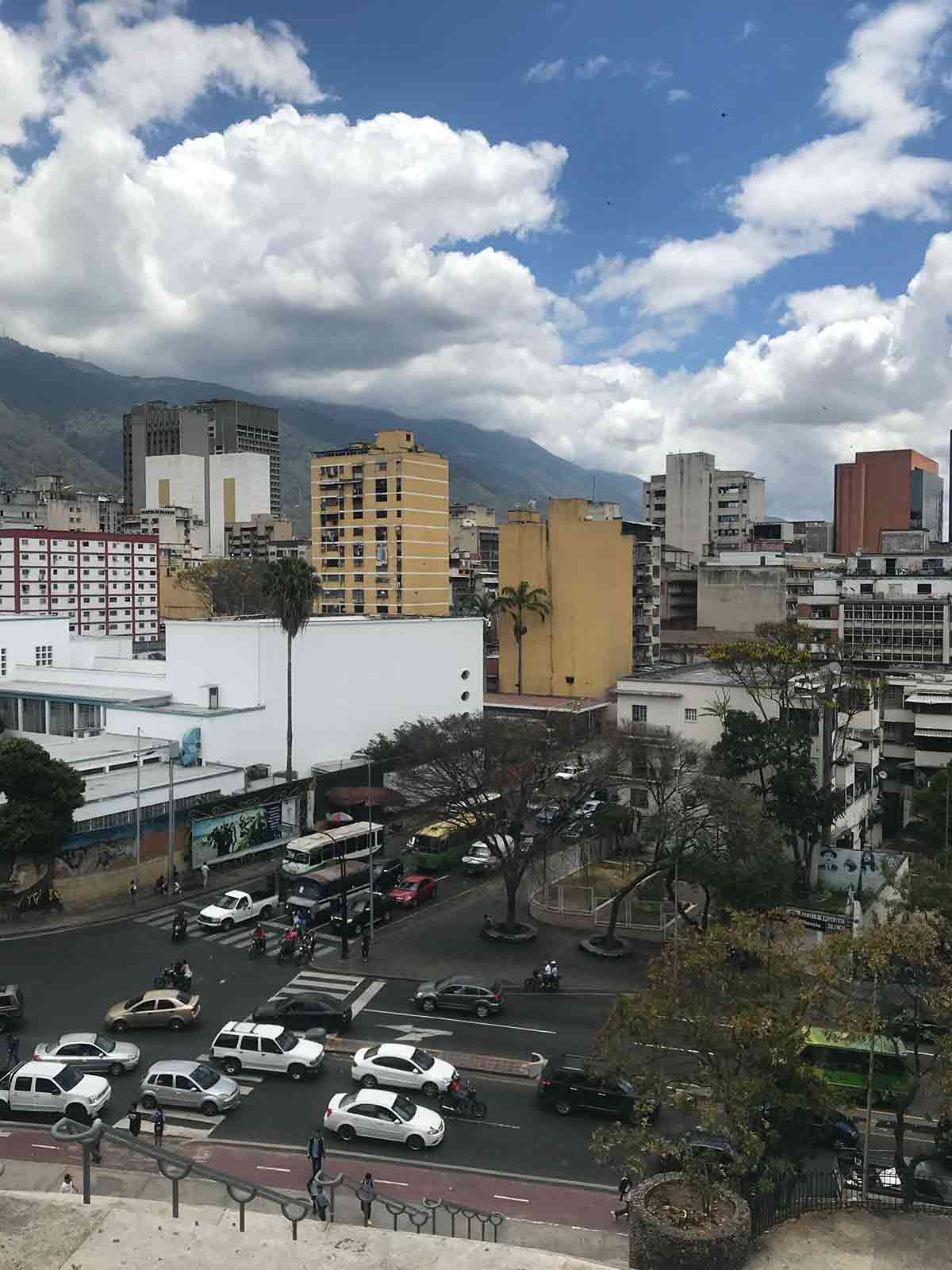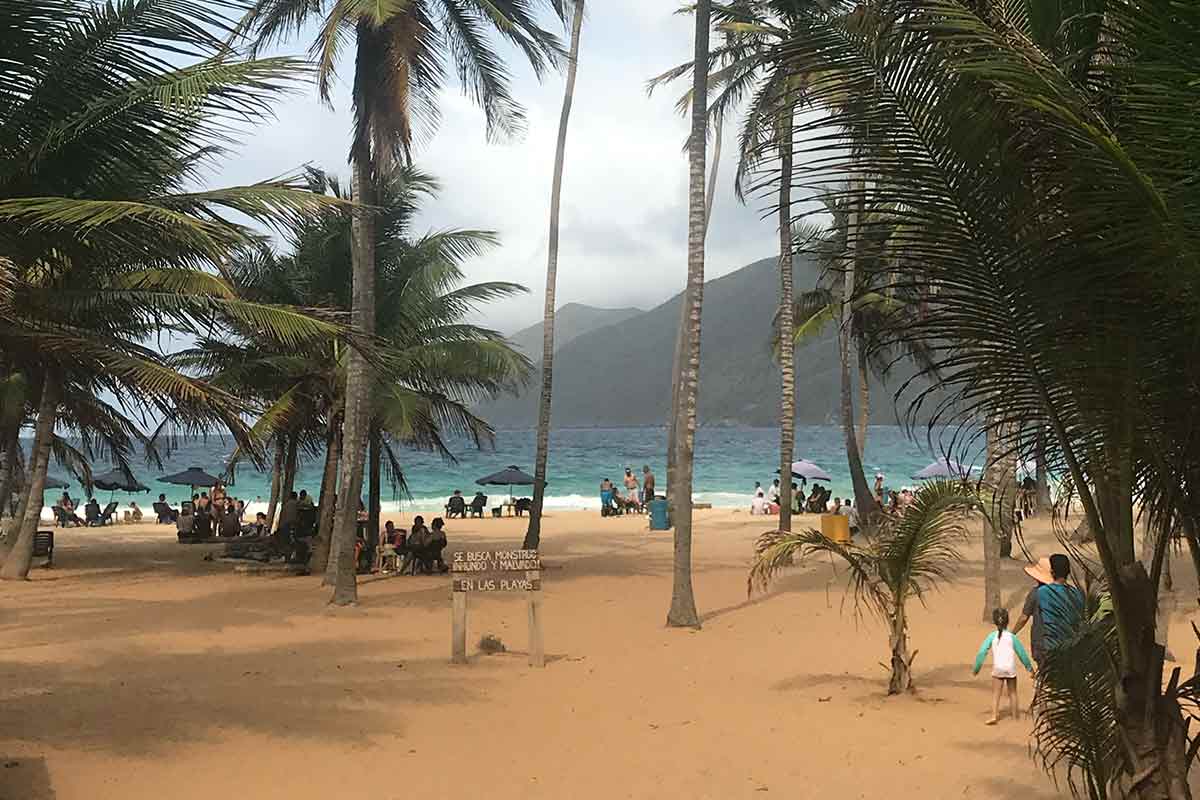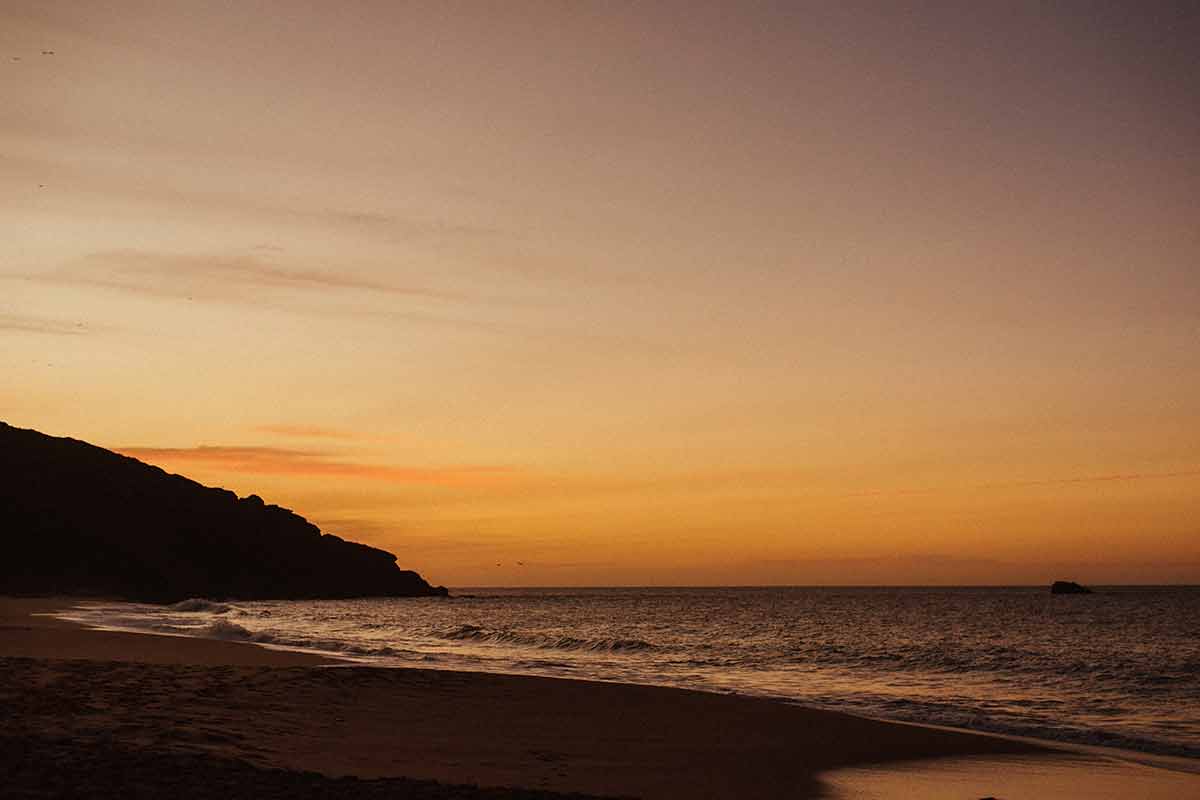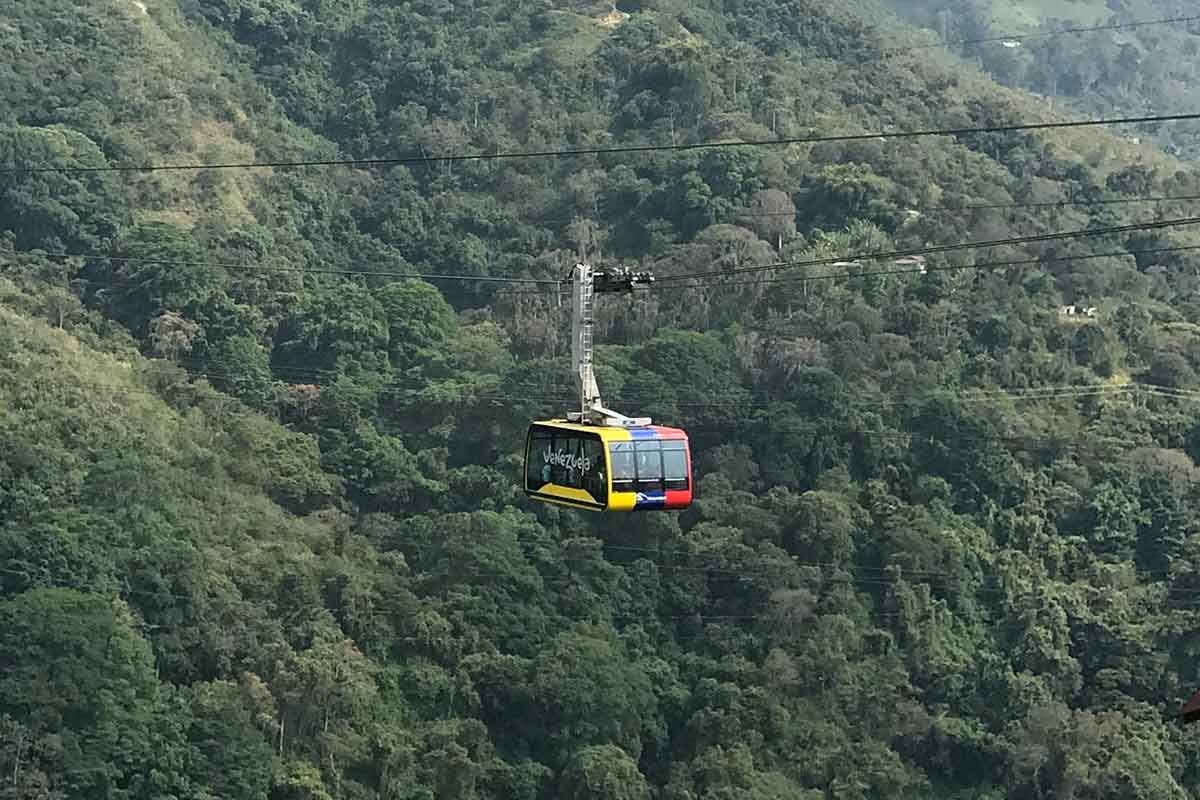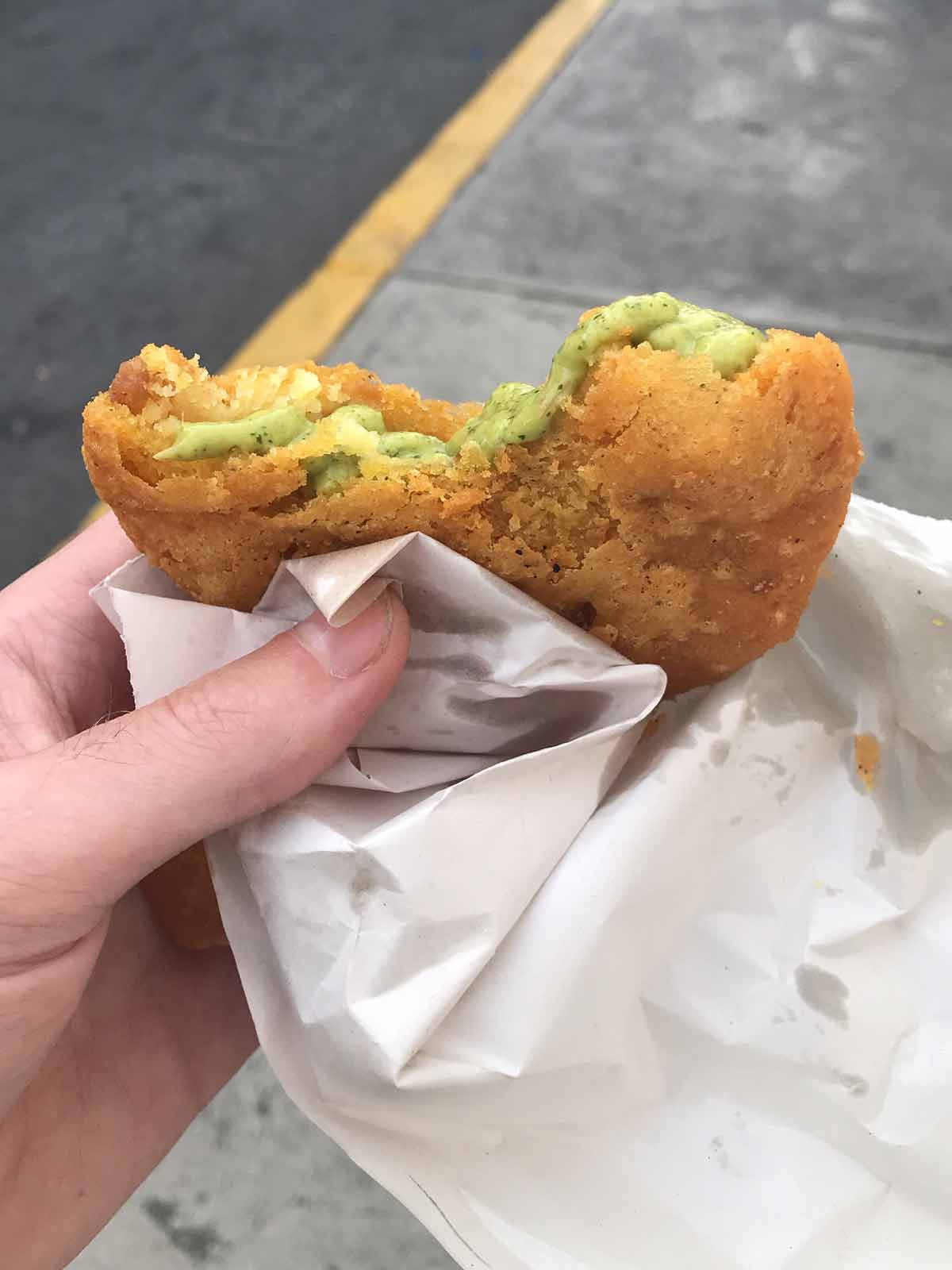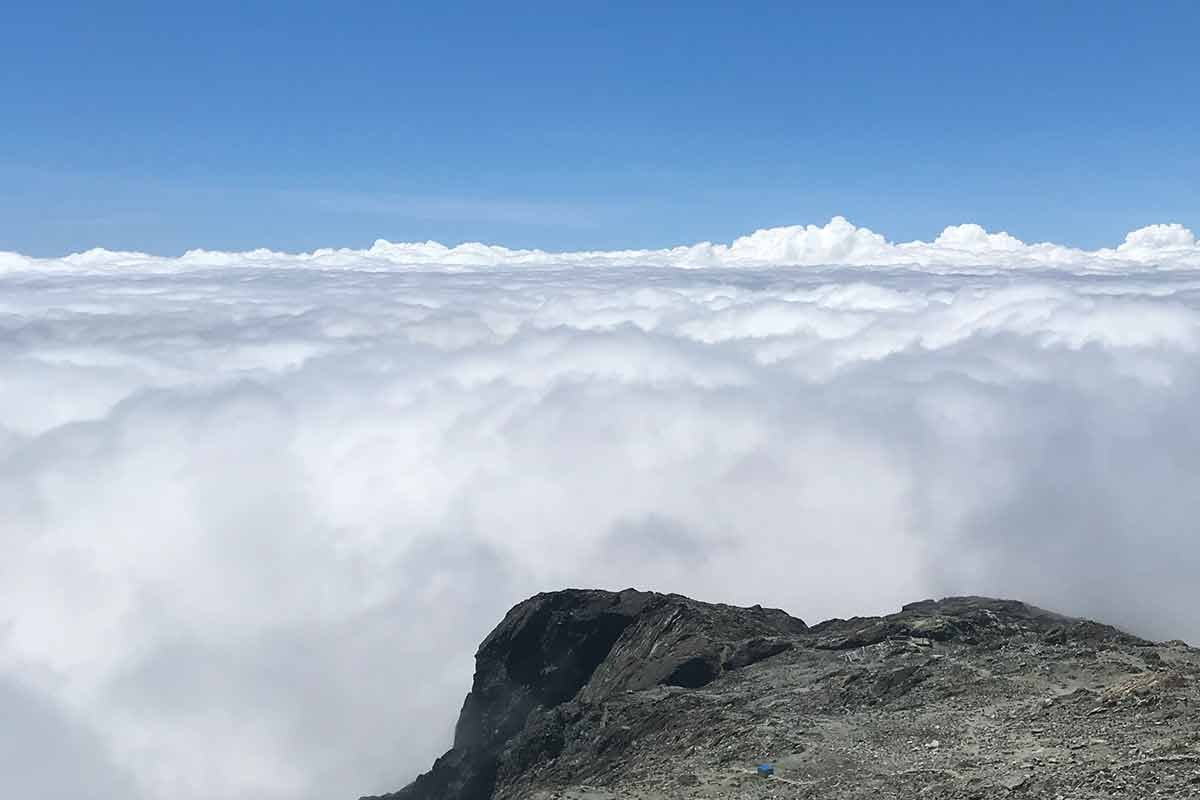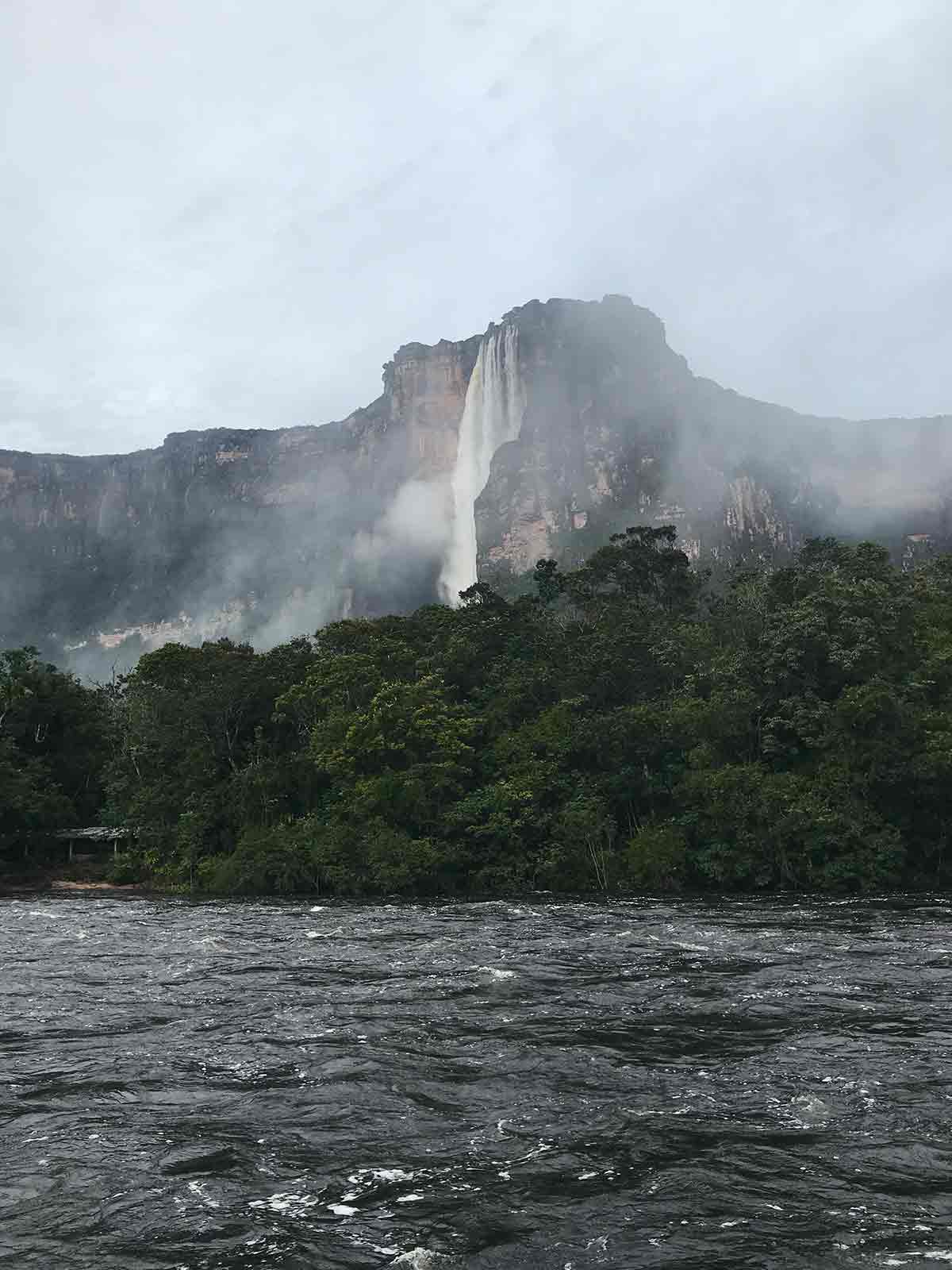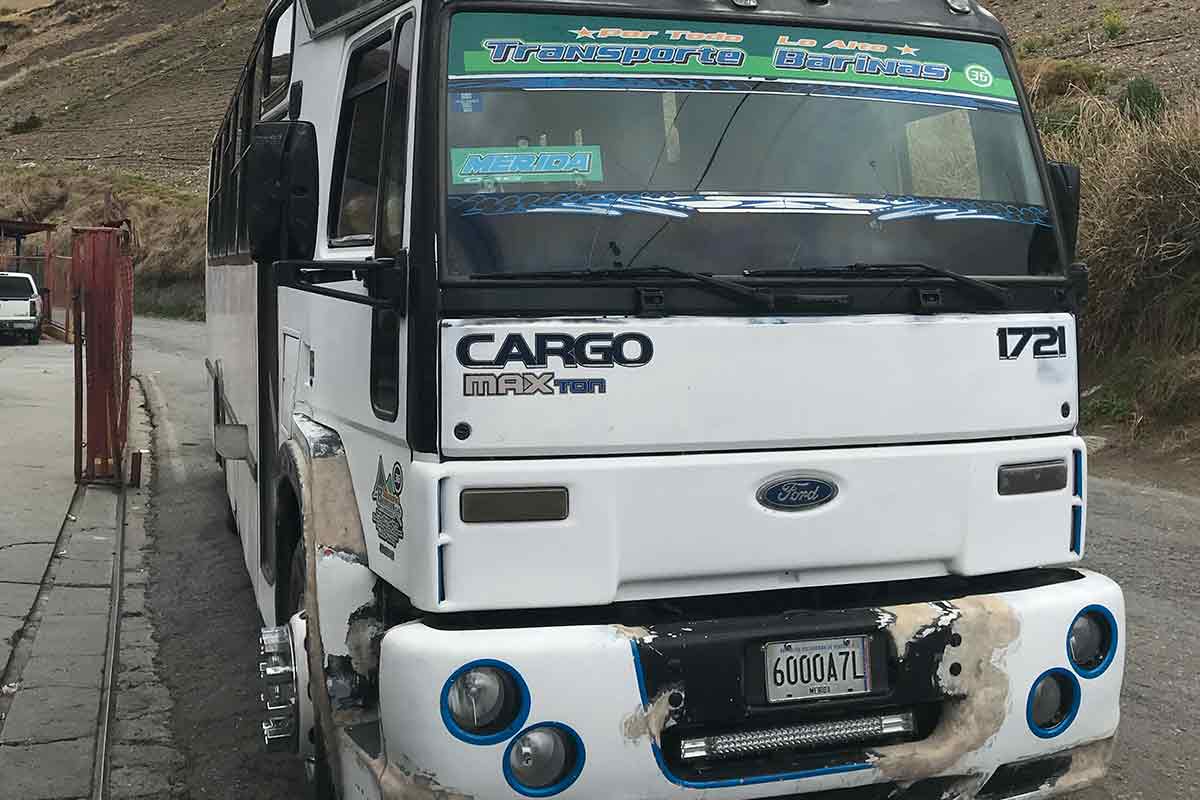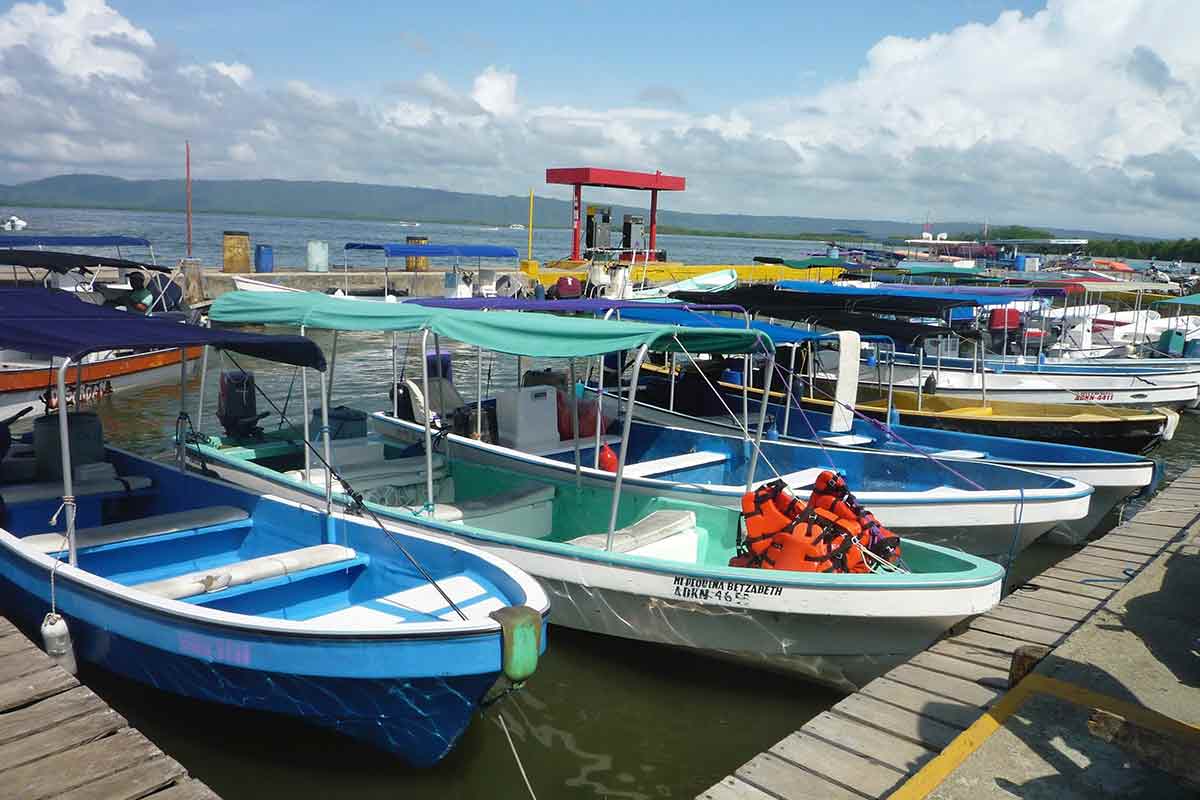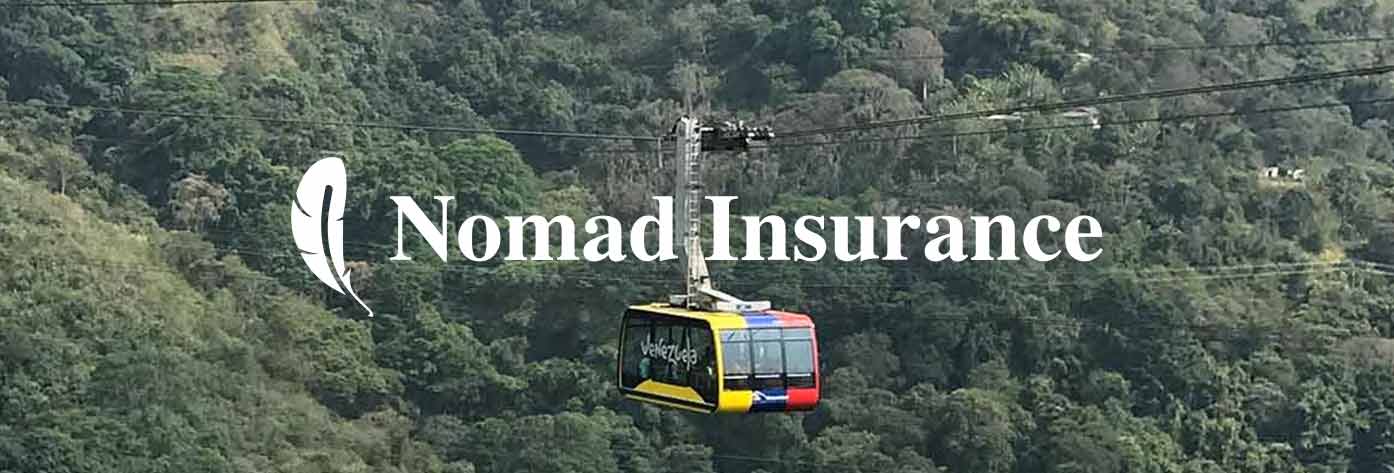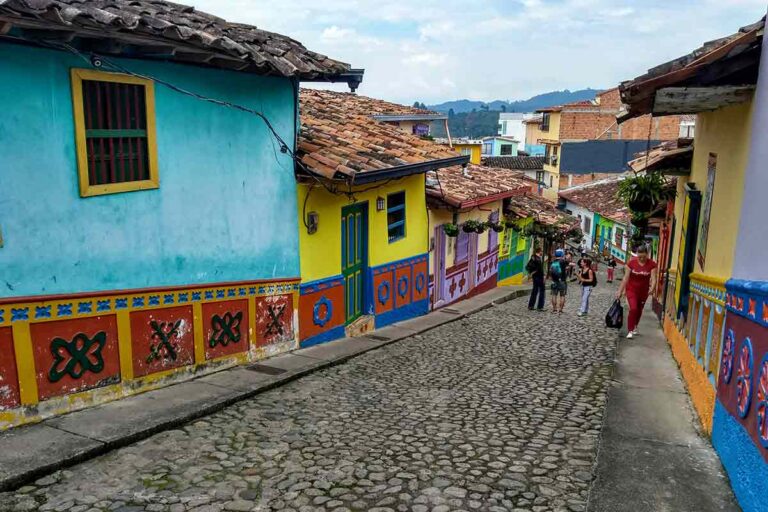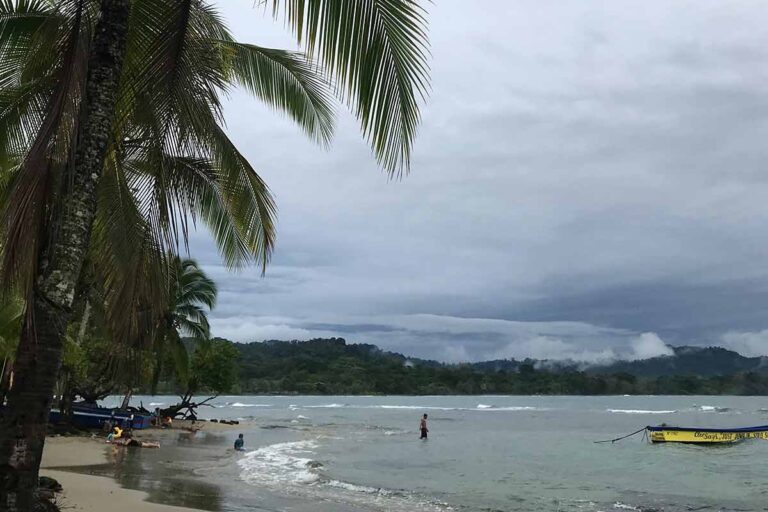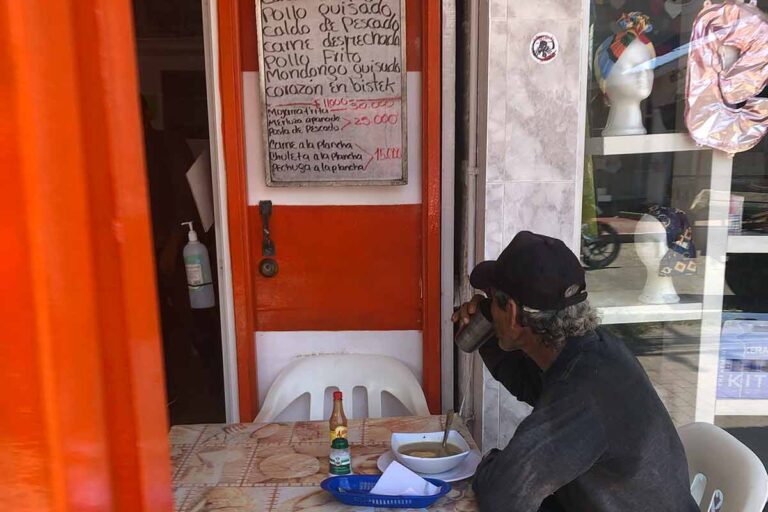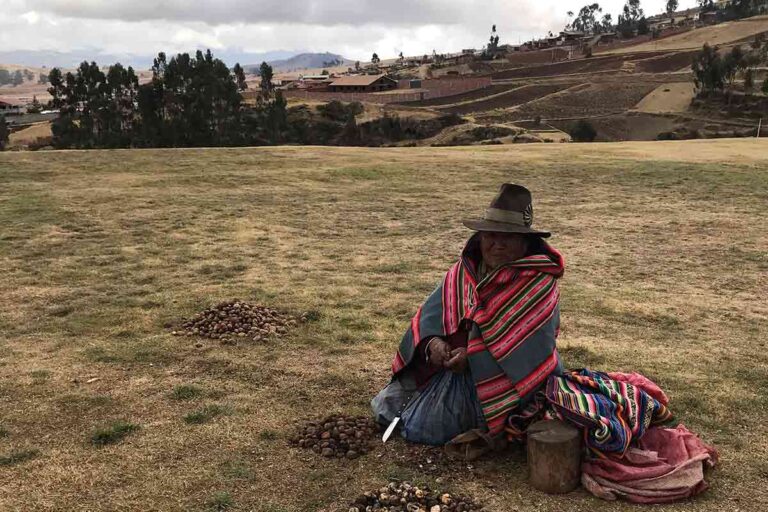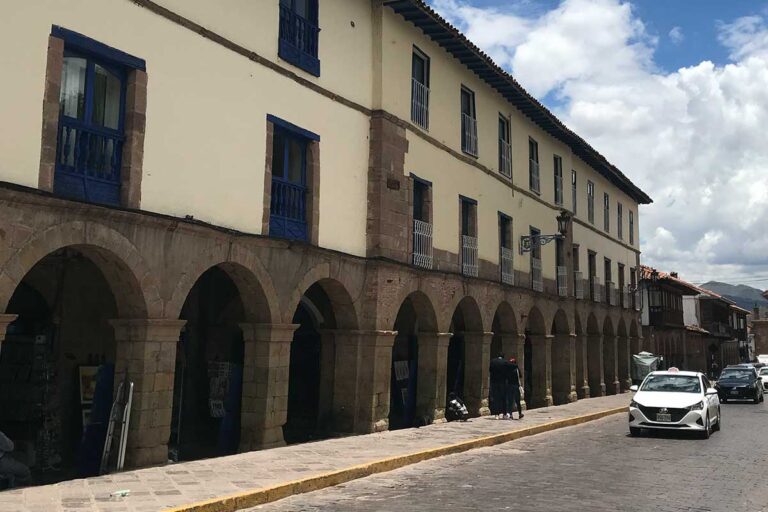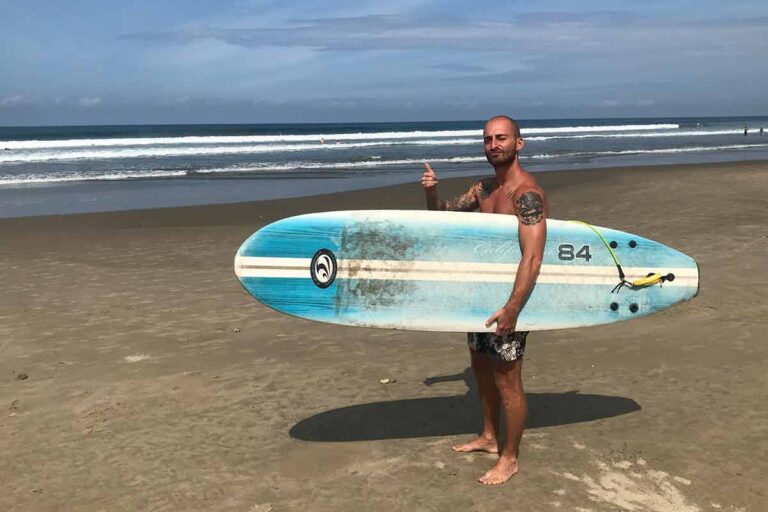Backpacking Venezuela itinerary
Let’s face it, Venezuela is not a South American country that gets good press.
People are aware of the political unrest and economic situation, which leads to high levels of crime. As such, not many people are open to a Venezuela backpacking trip.
Backpacking Venezuela
However, there are a few brave travelers that prepare very well and travel to Venezuela to explore and enjoy the sheer amount of beauty and incredible experiences it has to offer.
If you’re one of them and you’re looking for a Venezuelan travel itinerary, we are going to help you with that in this guide.
Is Venezuela worth visiting?
Those after an adventure will find Venezuela truly memorable. Not because of the danger, but because its full of some truly incredible sceneries.
Home to the highest waterfall in the world, tropical beaches and Andean peaks, Venezuela is by far the most underrated country of South America, and possibly one of the most beautiful too.
BLATAM backpacking data:
- 💰 Currency: Bolívar, USD
- 🇻🇪 Language: Spanish
- 🌎 Population Size: 28.7 Million
- 📍 Best Secret: Canaima National Park
- 🍴 Eat: Arepa
- 🥛 Drink: Merengada
- 💸 Average Daily Budget: $20-30
Is Venezuela Safe?
Venezuela is not the safest country in South America, so you must exercise extreme caution if you’re planning to spend 1 week in Venezuela or more.
Violent crimes are not uncommon, including carjacking, armed robbery, and homicide. If you want to go backpacking in Venezuela, it’s very important to be aware of the issues.
Travelers can enjoy their time, but they have to be extremely careful on the streets. But not all is doom and gloom, see our guide on safety in Venezuela for some first-hand tips.
Safety Facts About Venezuela
- The best way to evaluate safety is by looking at the 2020 Global Peace Index. This measures the state of peace of each country in comparison with the rest of the World, by evaluating both tangible and qualitative indicators.
- Venezuela ranked as 149th out of the 163 nations measured, which is similar to that of Turkey and Nigeria. For comparison, The United States ranked as 121st.
- There’s no denying that Venezuela has some sobering issues at present. And even though it ranks as the most dangerous country in Latin America, we first need to give some perspective. Most violence occurs in certain areas of Caracas, as well as around the borders of the nation (with Colombia, Brazil and Guyana).
- Aside from these areas, other major destinations like Mérida and Ciudad Bolivar are actually pretty safe for tourists. As long as you keep valuables at home (and not walk with your phone in your hand), then you’ll most likely have no problems!
Backpacking Venezuela Itinerary
There are a few places to visit in Venezuela that you can’t miss and in this article, we’ll look at some of them.
Caracas
Caracas is the capital of Venezuela and it’s located below El Ávila. This mountain is a barrier between the city and the Caribbean sea.
People who go backpacking in Venezuela usually stop in Caracas because there are many things to do here. Such as visiting the Birthplace of Simon Bolivar, hiking El Ávila, and enjoying the nightlife in Las Mercedes.
Additionally, you’ll find good restaurants and many parks you can visit, such as Parque del Este and Parque del Oeste. See our guide on staying safe in Caracas for more tips.
Angel Falls
The Angel Falls is easily one of the main attractions in the country and it’s worth including it in your Venezuela backpacking itinerary.
This is the highest waterfall in the world and it’s truly a majestic sight to see. Try to visit during the rainy season so you can see the Angel Falls at their best.
Seeing the waterfall close and personal requires a canoe trip and a trek through the forest, so make sure you’re up for that. You also have the option to fly over the falls!
Choroni
Choroni is a lovely beach town that comes to life during the weekends. Locals often flock there, especially during the summer, to enjoy the beach.
One of the reasons why Choroni is a great place to add to your Venezuela backpacking itinerary is because it will simply allow you to relax.
The town is sleepy during the week, so you can recharge while you stroll through colonial streets, take a dip in the ocean, and go wildlife sightseeing in the cloud forests, where you can spot monkeys, birds, and snakes.
Isla Margarita
Isla Margarita is one of the most touristic places in Venezuela, so you should make time for it in your Venezuela backpacking trip.
Venezuelans love to vacation in Margarita and the locals are known for their friendliness. The golden beaches are sublime and Playa el Agua is one of the most popular ones.
It’s surrounded by places to eat and shops, and there’s also active nightlife, so it’s a good choice.
While you’re in Margarita, we recommend you try the seafood empanadas. They’re incredible!
Merida
Merida is a great place to add to your Venezuela backpacking itinerary because it gives you a break from the tropical climate.
It offers many activities, such as paragliding, skydiving, hiking, trekking, and white water rafting, among others.
Here you can take one of the longest cable-car rides in the world up to Pico Espejo, which offers incredible views over Pico Bolivar (the tallest peak in Venezuela)”
We also recommend you go to La Venezuela de Antier to learn some history and step back in time for a while.
When it comes to nightlife, Mérida is the place to be. As one of the most popular cities for students and backpackers alike, there’s a tonne of great clubs and bars. Our best picks are El Bodegón de Pancho and El Hoyo Queque
Los Roques
Last but not least in our Venezuela backpacking itinerary, we have Los Roques, a mainland 40 islands and over 250 coral reefs.
Ocean lovers will enjoy their time in Los Roques! You can go on a boat trip during the day and swim in crystal clear waters, drink beers, and eat good seafood.
Additionally, you can go diving or snorkeling to explore the coral reefs at the Los Roques Archipelago National Park.
Venezuela Itinerary (2 Weeks)
Below we’ll cover our very best itinerary of Venezuela. As well as keeping an eye on the time, it’s also been designed to keep things fresh and exciting too for you.
Caracas (Days 1-2)
We’ll first kick off our adventure through Venezuela by heading to the capital. Caracas scares most travelers off visiting this country, however, really it’s like any other big city in Latin America.
In fact, you may actually find you like it… stranger things have happened!
There are many neighbourhoods here (some that are definitely best avoided) and as such, we recommend you to stay in Altamira, which is the safest and has many good hotels and restaurants.
Whilst here you’ll want to head up the cablecar to the peak of El Ávila, which offers some truly stunning forested views and those over Caracas.
It’s best to come here in the morning when the skies are clear, and you can see the deep blues of the Caribbean Sea next to the big city itself.
We also recommend heading to the Panteón Nacional to learn about Venezuela’s history, as well as being the resting place for many notable figures.
Mérida (Days 3-5)
From Caracas we’ll now take a 10 hour bus to the buzzing city of Mérida in eastern Venezuela.
Mérida is a popular place, and for many good reasons. You’ll be surprised to know that this city is nestled within the Andes – with the prominent mountain range stretching as far north as Venezuela, which is news for most of us.
As such, there’s many hikes you do in the surrounding hills, and we recommend heading on a horseback tour to see the very best sites around.
Whilst in Mérida, be sure to hike up to the stunning Laguna de Mucubaji, with the glacial lake sitting at an altitude of 3650m.
Other cool things to do here include strolling around the Plaza Bolívar, watching a bullfighting show at the Plaza de Toros as well as joining in the chaotic nightlife scene amongst local students.
Los Roques (Days 6-9)
Now it’s time for the perfect beaches and lapping waves of the Caribbean, and there’s no better place for this than within the archipelago of Los Roques.
To get here we’ll first take the bus back to Caracas, and then take a small flight over to the islands (around 12 hours in total).
Located around 160km north of Caracas, this archipelago is made up of more than 300 beautiful cayes and islands. Gran Roque is the biggest and most likely where you’ll be staying, where you can relax on its picturesque beaches and go for a swim in the turquoise waters.
It’s also renowned for its transparent waters, which are perfect for diving where you can see everything from turtles and parrotfish to nurse sharks.
Another must-see is the Cayo de Mayo, which is the most stunning island of the lot, and can be seen with an organised day trip.
For those who love an adrenaline rush, then head to the Cliff Jump area on Gran Roque, where there’s platforms up to a nerve-wracking 30 meters!
Even if you don’t jump, watching the locals perform spectacular dives off the tallest ones are definitely worth the watch.
Canaima (Days 10-15)
Last but not least, we’ll be heading into the wild jungle of Venezuela, which in our opinion is the most spectacular portion in all of South America.
To get here we can take a direct flight from Los Roques, which is actually quite surprising considering given its remote nature.
The town of Canaima is the gateway to the Canaima National Park, which is the true lost world of the Americas. We’ve saved the best till’ last, as here is where Angel Falls is located – the tallest waterfall in the world!
Here you can join a 3 day trekking tour into the Venezuelan jungle to get a glimpse of this 979m towering beast.
You can also go on a longer trip to the tabletop mountains known as the Tepui, which unfortunately is beyond the scope of this itinerary, but if you have the time – we 100% recommend going.
And that marks the end of the trail through Venezuela. From Canaima you can take a flight back to Caracas for your international departure.
Alternatively, if you have more time, consider heading south to Santa Elena de Uairén, and then crossing into Brazil.
And there we have our 2 weeks Venezuela itinerary. Now let’s move on to our most important tips, so you can have the best experience possible here.
Venezuela: Travel Safety Tips
Venezuela is not the safest place to visit, which is why you need to follow travel safety tips and be extremely cautious when backpacking in Venezuela.
Your safety is mostly in your hands, so here are a few tips and precautions to take:
- Top Sights in Venezuela include: Angel Falls, Los Roques, Mount Roraima, Cerro el Ávila Cablecar (Caracas)
- Never flaunt your valuables in public, dress to blend in, and leave your expensive clothes and jewelry at home.
- For some of the best accommodation check out: Hotel Arroyo (Caracas), Hotel Plaza CA (Mérida).
- Don’t leave your things unattended.
- Pack appropriate clothes for the tropical weather. If you’re visiting places like Merida, make sure you pack for the cold too.
- Avoid dangerous places. Some dangerous cities in Venezuela to look out for are: Maracaibo, Maturin and some parts of Caracas (like Petaré).
- Safety starts with the place you stay at, so choose a hostels/hotels in safe areas and be sure to take out travel insurance for protection on the road.
- Don’t walk around alone at night. Always use registered taxis.
- Venezuela’s food greatly varies from one region to the next. However, regardless of where you are you must try Arepas which are small pita-style sandwiches with fillings like beans, cheese, rice and meat. An absolute staple for a day in the life in Venezuela!
- If you plan on using public transportation, always be vigilant.
- Do you best to practice some Latin American Spanish before you arrive to Venezuela because knowing just a few words can go along way.
- Carry a high quality-sunscreen with you because will need it.
- Don’t drink the tap water, always rely on bottled water or carry portable filter bottle to save yourself some money.
Doing your research when putting together a Venezuela travel itinerary is key. Plan your trip well, this is not a country where you can successfully wing it. Be prepared and be cautious. If you can get a trustworthy local guide, do it.
Traveling Around Venezuela by Bus
Despite what some people may say, traveling around Venezuela by bus is possible, you just have to do your research. Try to understand the bus system of each city you’re visiting so you can determine how to travel around.
Buses are inexpensive and they’re also a fast way to get around.
You should splurge on luxury buses when traveling from city to city because they are more comfortable and safer. Such as Rodovias, Aerobuses de Venezuela, and Aeroexpresos Ejecutivos.
Preparation before a trip to Venezuela is vital. Where there is poverty, there are usually opportunists, so be sure to dress-down and avoid going out alone.
If possible, having a personal contact in the country that can pick you up and show you around is the best way to stay safe whilst also getting to know the customs and how things work
Best Time To Visit Venezuela?
We’ve spoken a lot about the best time to visit South America on this blog (George is absolutely obsessed with checking the weather when we travel).
Venezuela is best described as a hot, tropical country. Whilst there’s some parts that can get cold (especially in the Andean regions), most destinations are going to be nice and toasty.
The dry season in Venezuela runs from around December until May, and is the best time to visit. Not only will you avoid the rains, however the hotter areas of the country (like the Amazon) will be slightly cooler which is better for hikes and exploring.
As there’s less rainfall, these months will usually be more popular with tourists, especially among the Caribbean coast in destinations such as Los Roques and Margarita Island.
Months like December and January tend to be more expensive, however you can usually find deals in early Spring.
The contrasting wet season tends to be more oppressive than the dry season. Temperatures tend to increase more, which can make areas of the jungle pretty tough going.
If planning on heading there, then make sure you bring lots of mosquito repellent since the wetter rains are favourable conditions for them.
When it comes to the rains, most of the country only sees a slight increase, so it’s actually still a good time to come (you’ll find cheaper prices too during this time of year). Warmer temperatures also favour those heading to the Andes, making mountain treks slightly less bitter for the fingers.
We invite you to read our more focused guide on the best time to visit Venezuela to get a better understanding of which places to visit during which months.
What To Pack For Venezuela?
As already mentioned, Venezuela is hot year-round. When it comes to packing, this means you’ll mostly want light clothes, such as shorts and T-shirts.
If heading to the jungle, it would be wise to take a rain jacket, since there’s a good chance of rain year-round (although you’ll definitely want it during the wet season, as it will see almost triple the amount of trickle!).
If planning on visiting more than just the beaches and jungle (for example the mountains or desert), then you’ll also want to pack some warmer layers too, such as a coat, jumper and jeans.
You’ll also need to bring lots of sun cream and bug repellant regardless where you visit, since most areas will need them year-round.
As well as these, you’ll also need to pack all the usual essentials which include toiletries, a good pair of hiking boots, toiletries, a document holder, towels, a water bottle as well as a daypack for any excursions you’ll be taking part in.
Got travel insurance for Venezuela?
Are you planning to visit Venezuela soon? It can be difficult to find a reputable provider who will cover you in this country. SafetyWing is a solid choice who provide a monthly renewable plan, which includes medical cover and multiple home visits during your trip.
Backpacking Venezuela: Final Words
Despite it not being the safest country to visit, Venezuela is easily one of the most beautiful places in South America.
The diversity is amazing and there’s so much to see and do.
However, the political and economic situation is a huge gray cloud over the country, and you have to be extra careful when backpacking in Venezuela.
See our backpacking South America guide for more travel inspiration!
👉🏽 P.S. If you’ve found this guide helpful, buy us a coffee here to say thanks! Or, support us by downloading our South America Travel Bible to get our best content.
“Dear traveler! Some links in this post contain affiliate links. Meaning, if you click through and make a purchase, book a hostel or sign up for a tour, we may earn a small commission at no additional cost to you. Your support means a lot and helps us to carry on traveling and maintaining the quality of this site for you.”

